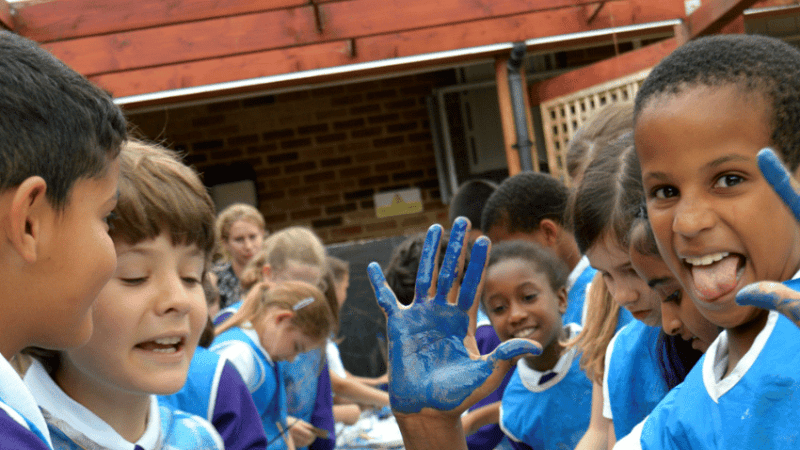Start the New School Year as you Mean to go on by Getting Behaviour Right

How to improve behaviour from day one by being the boss, building a community and being believable…

Meet George. ‘I’m just about to start my second year of teaching. My first year was a challenge. I didn’t get the students where I wanted them in terms of behaviour. That, in turn, had an impact on progress and, to be honest, gave me a few sleepless nights. So I want this year to be different and I’d like it to be different from day one. Any tips?’
George is right to make sure that he starts the first day back on a sound footing. Day one is where you lay the foundations for appropriate student behaviour. Get it right and you’re much more likely to get the rest of the year right too. It’s as important as that.
Luckily, day one is also the day when your students are most primed to learn your way of doing things, most keen to make a success of the forthcoming year and, if the previous year didn’t go too well, most determined to turn over a new leaf. It’s a day, therefore, that deserves some extra teacher attention.
Here are three experienced teachers on how to get day one right.
Teacher A: Be the Boss
Students want you to be in charge. They might not know that they do, but they do. If the teacher is the boss, they feel safe, contained and looked after. So my tip is be the boss.
Here’s how:
- meet and greet at the door – hold back any student not ready to enter (eg chatting, uniform issues)
- have a seating plan pre-prepared (or use boy/girl)
- have an in-silence activity waiting for them as they take a seat
- take up a central, commanding position
- speak clearly and concisely
- say things with the expectation that they will be followed – be surprised if they aren’t!
- stop talking if a student is talking over you – wait for silence with a neutral stare
- end the lesson in a controlled manner
The verdict Students prefer teachers who are in charge. They rate them as more likeable and better at their job. So, yes, definitely be the boss. But a word of warning: being the boss doesn’t mean being terrifying, shouty or stern. Those approaches are as counter-productive as they are unethical. In fact, being the boss must also include warmth, smiles and kindness.
Teacher B: Build a Community
Pro-learning behaviour comes from pro-social attitudes. And you get pro-social attitudes if you turn your classroom into a community. Introduce and display the following three principles:
- We are kind to each other
- We respect each other
- We support each other
- give in-silence thinking time (timed is good)
- give in-silence writing time (again, timed)
- get students to share their answers in pairs
- get the pairs to share in quads
- get quads to share with the whole class
- Thinking about the exercise we just did, how effective were we at sticking to the three principles?
The verdict The link between pro-social attitudes and pro-learning behaviour is long established, and Teacher B’s approach – two interlinked think pair share activities – is neat and powerful. Make sure, too, that you record any pro-social comments that the students give as a record of what was discussed. Return to the record throughout the year to prime, prompt and embed the behaviour you want.
Teacher C: Be Believable
Behaviour comes from buy-in – and the thing that the students need to buy into is you, the teacher. If they believe in you, then their behaviour will be what you want it to be; if they don’t, it won’t. So be believable. What does that mean? Well, it’s three things. The students need to believe that you want them to do well, you are an effective teacher and you are a reliable teacher.
You have to prioritise students’ learning over all other concerns. Make their progress your single-minded pursuit. Take this approach and the students will rightly believe that you want the best for them educationally.
But prioritisation is not enough; you also have to deliver teaching that stimulates and stretches your students. Oh, you need to vary your approach too. Teach the same way all the time and the students will switch off. So mix it up: discussions, experiments; roleplays; what-if scenarios; silent working; project work; timed activities; sit down work; stand up work; multi-media tasks; puzzles; quizzes, hot seating; co-operative learning; think-pair-share activities (thank you Teacher B) – you get the idea.
Finally, you have to be reliable. If you say marking will be done by Monday, make sure it is. If you say that a certain behaviour carries a sanction, make sure that it happens. The same goes for rewards. There can be no empty threats, no false promises. What you say and what you do have to be one and the same. If it is, then what you say will carry the weight of what you do; if it isn’t, it won’t. So be reliable.
The verdict There’s some great advice here from Teacher C. Sure, you still might get some misbehaviour, but if most students are engaged in the lesson, then the opportunity for that misbehaviour to spread is dramatically reduced. The momentum is now with the learners and the learning.
Conclusion
So there you have it. Three teachers, three approaches. So which is the best? Well, actually, each works in its own right. But the best approach – and you may already have guessed this – is to combine all three. Be the boss, build a community and be believable. If George does this from day one, he’ll get better behaviour, better progress and a better night’s sleep.












